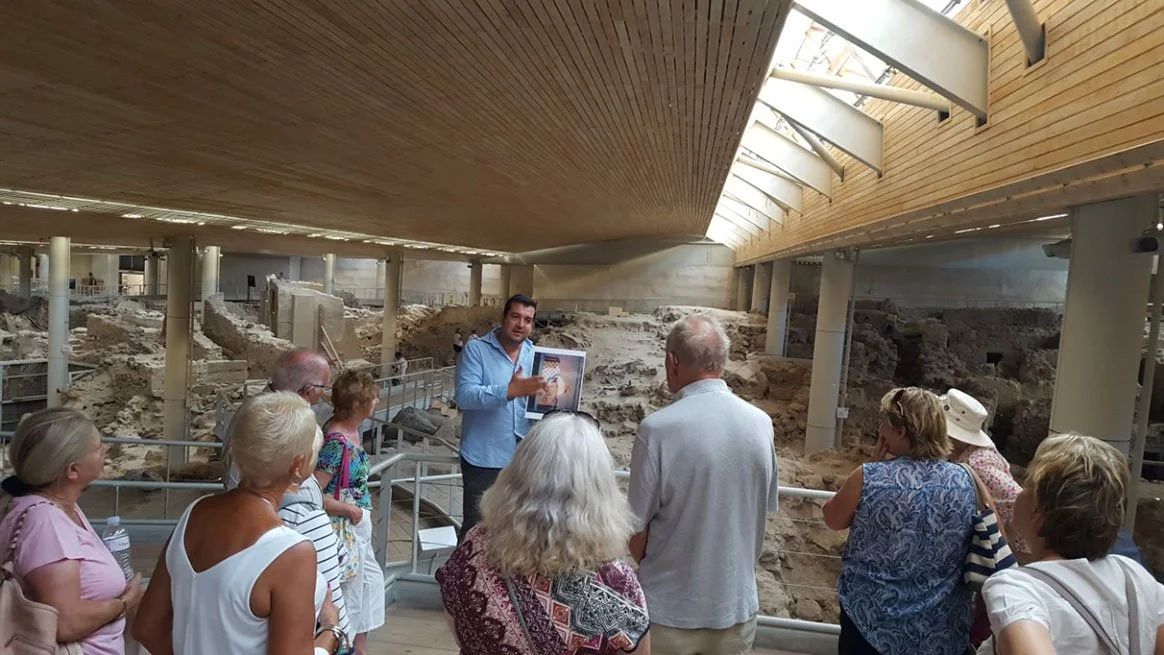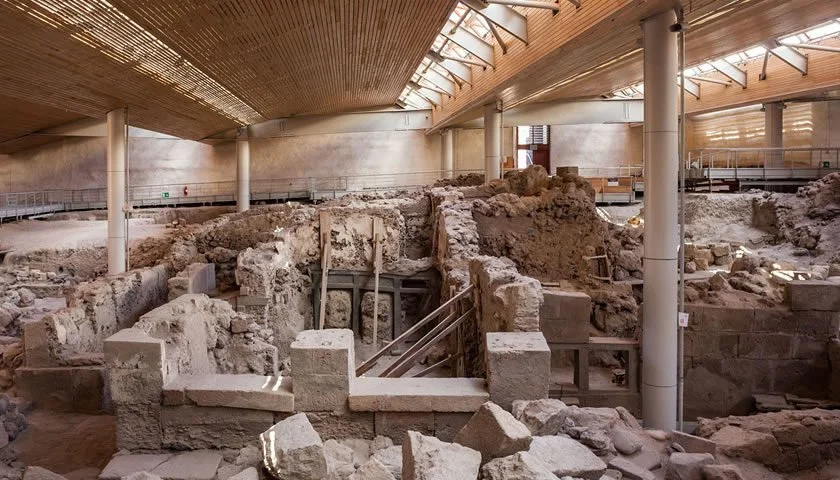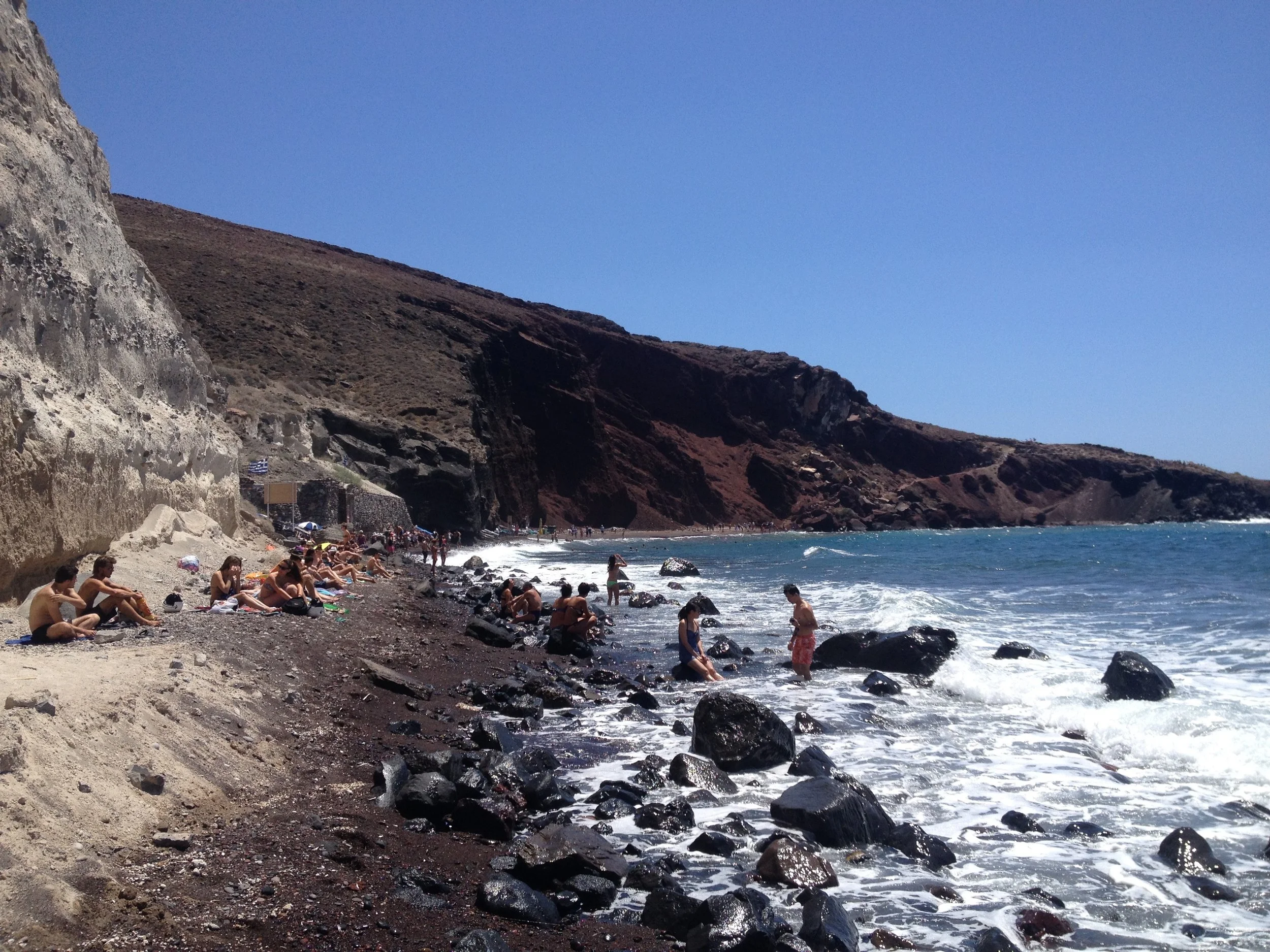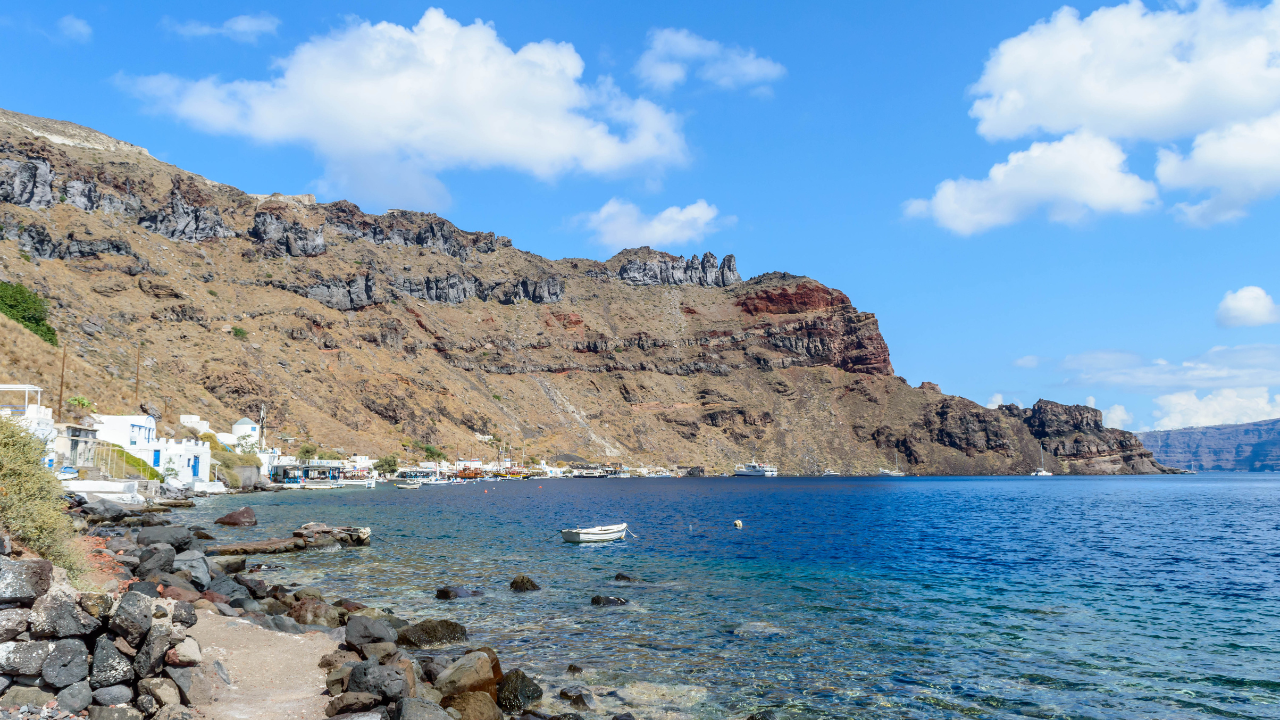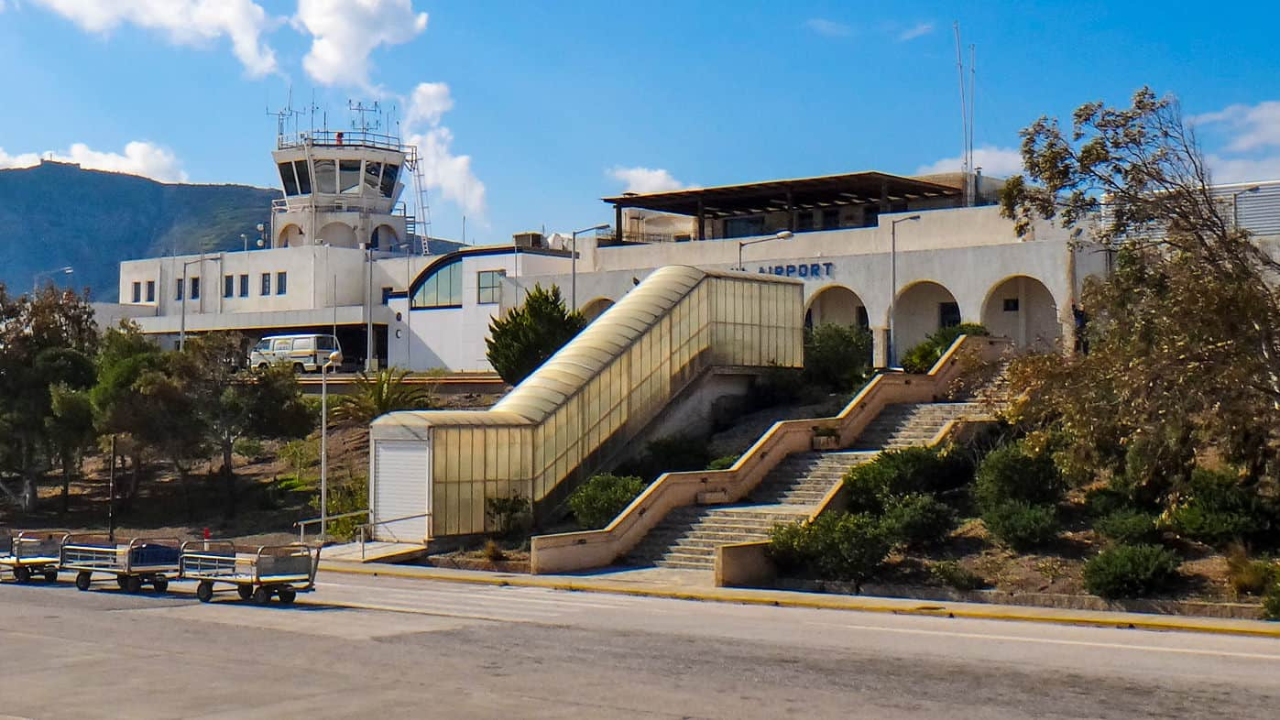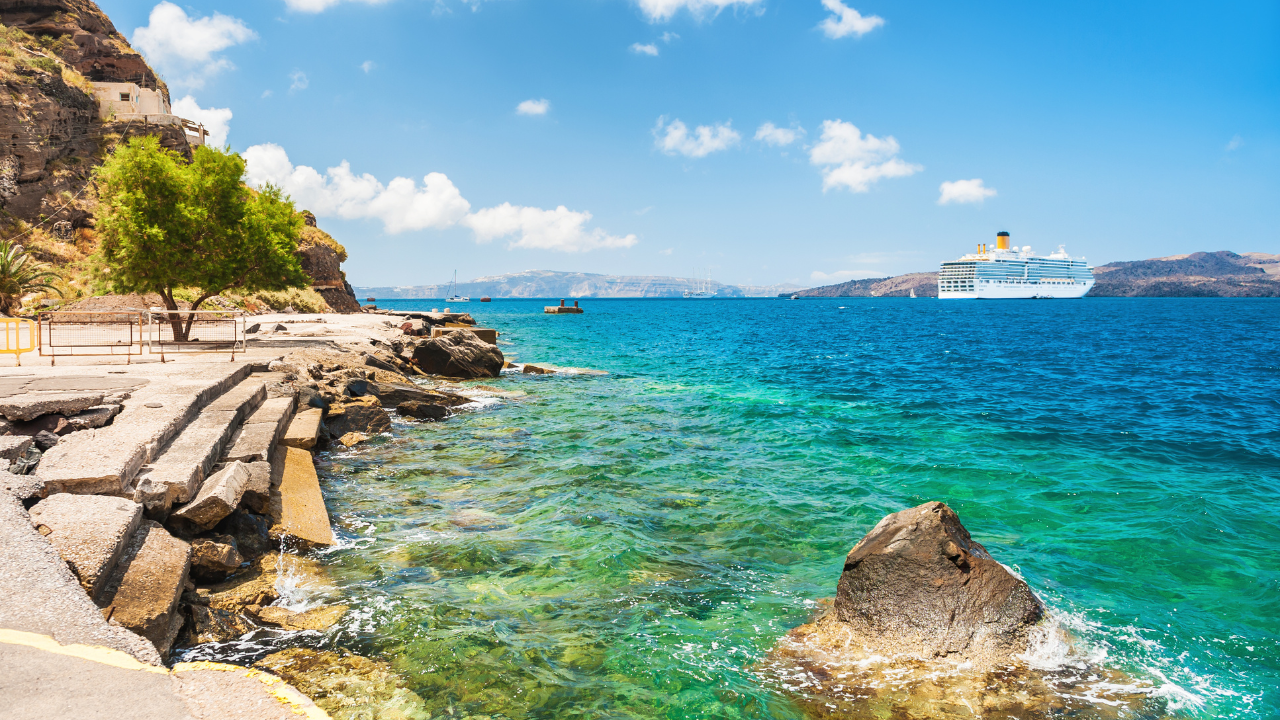
Akrotiri’s Excavations
Journey Through the Prehistoric Wonders and Rich History of Santorini's Most Fascinating Archaeological Site in Greece.
Historical Facts
The prehistoric site of Akrotiri became known worldwide due to the excavations that were conducted under the supervision of the eminent Greek archeologist Spyridon Marinatos in 1967, which were continued by archaeologist Christos Doumas in 1974. However, excavations had already started in 1870 by the French geologist F. Fouque.
Archaeological research has revealed that human habitation at the historic site of Akrotiri dates back to the Neolithic Age (4500 BC). Initially a small fishing and farming village, Akrotiri grew into a significant trading hub in the Aegean due to its strategic location between Cyprus and Minoan Crete. This prime position facilitated the trade of copper, spurring the community's development.
Pottery discoveries indicate that Akrotiri's residents engaged in trade with Crete, the Dodecanese, mainland Greece, Cyprus, and possibly Egypt and Syria. This extensive trading network contributed to the civilization's growth and prosperity, fostering a flourishing way of life.
Key factors in Akrotiri's growth included agriculture, animal husbandry, fishery, and shipping. Excavations reveal that residents worked as engineers, architects, town planners, builders, and artists. They cultivated wheat, barley, legumes, olives, and vineyards, exporting wine, metals, and volcanic rocks. Beekeeping and weaving, along with saffron collection, especially by women, were also significant activities.
By focusing on these diverse occupations and trade activities, Akrotiri transformed into a prosperous and vibrant community, leaving a lasting legacy in the Aegean trade history.
The high standard of living in ancient Akrotiri allowed its inhabitants to showcase their artistic skills and talents. Archaeologists have discovered a diverse range of vessels crafted by locals, available in various sizes, shapes, and colors, serving both domestic and aesthetic purposes.
Additionally, large murals uncovered in the area reveal the influence of the Minoans and provide invaluable insights into the lifestyle of that era. These murals, found on walls, doors, and windows, vividly depict scenes of nature, religion, and everyday life.
Tragically, around 1613 BC, this thriving society met its end due to one of history's most powerful volcanic eruptions, coupled with a major earthquake. The catastrophic event buried the town under volcanic ash, preserving the remains of the settlement remarkably well. The eruption was so intense that it altered the morphology of Santorini and became linked with the legend of the Lost Atlantis, although this connection lacks scientific proof. Notably, no human remains have been found, suggesting that the inhabitants evacuated following a series of strong earthquakes.
How can someone visit the archaeological site of Akrotiri?
Discover the ancient wonders of Akrotiri with ease and enrich your Santorini experience with our services. Today, visitors can explore the city's remnants, stroll through narrow stone-paved streets, and marvel at the ruins of grand squares and houses made of mud and stones. The basements, once used as storages and workshops, add to the historical charm. Many significant artifacts discovered here are exhibited at the Museum of Prehistoric Thera in Fira, while renowned wall paintings can be admired at the National Archaeological Museum in Athens.
The Prehistoric site of Akrotiri is conveniently accessible by car or public transportation, just a 20-minute drive from Fira. Ample parking is available for those traveling by car, and the famous Red Beach, located nearby, is a must-visit. Regular public transportation from Fira ensures a hassle-free visit, with up-to-date bus schedules available at the main bus station in Fira.
Enhance your visit by opting for one of the many bus tours available on the island. Choose between guided tours or comprehensive packages that include all the stunning and well-known parts of Santorini. Enjoy the comfort and convenience of having your trip organized for you, allowing you to focus on soaking in the beauty and history of this remarkable settlement.
Book your tour with us today and make the most of your Santorini adventure!
Location on Map
Akrotiri’s Ancient City is Located near the City of Akrotiri
FAQ’s for The City of Akrotiri
-
The Akrotiri Archaeological Site is an ancient Minoan Bronze Age settlement on the island of Santorini, preserving well-preserved ruins from the 17th century BCE.
-
The site was preserved by volcanic ash during the catastrophic eruption around 1627 BCE, similar to the fate of Pompeii.
-
Explore well-preserved structures, including houses with frescoes, streets, and public buildings, offering a glimpse into the daily life of the Minoan civilization.
-
Yes, there is an entrance fee to visit the Akrotiri Archaeological Site
-
A visit to Akrotiri typically takes around 1 to 2 hours, depending on your level of interest in archaeology.
-
Yes, guided tours are available at the site, providing in-depth information about the history and significance of Akrotiri.
-
The opening hours may vary, so it's advisable to check the official schedule before planning your visit.
-
Photography restrictions may apply to certain areas, so it's recommended to follow the guidelines provided on-site.
-
While children may find the ruins interesting, the site involves walking and may not be suitable for very young children.
-
Visitors can reach Akrotiri by car, bus, or guided tours, with options available from various parts of Santorini.

Explore more of Santorini’s Beauties
Towns
Beaches
Santorini’s Volcano
Historical Sites
Gastronomy
Ports & Airports
Athinios Port
Contact us
Contact us
We're excited to plan your dream Santorini holiday! Our team is here to create the perfect itinerary and answer your questions.
Fill out the form below or contact us through social media for personalized assistance.



